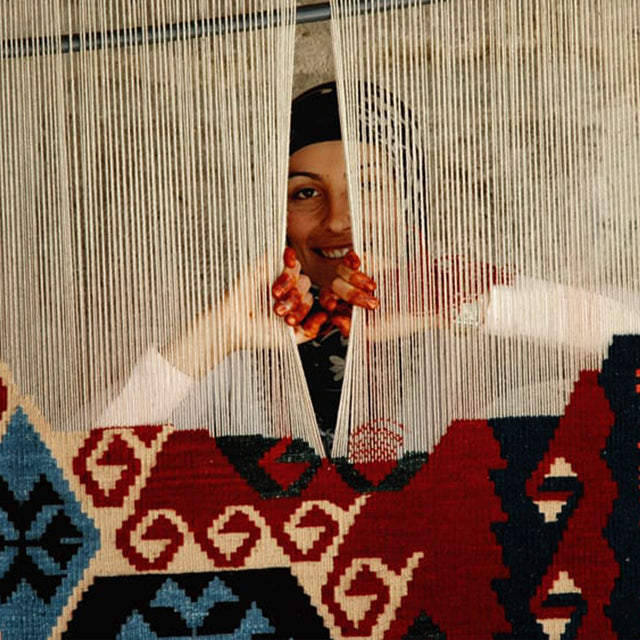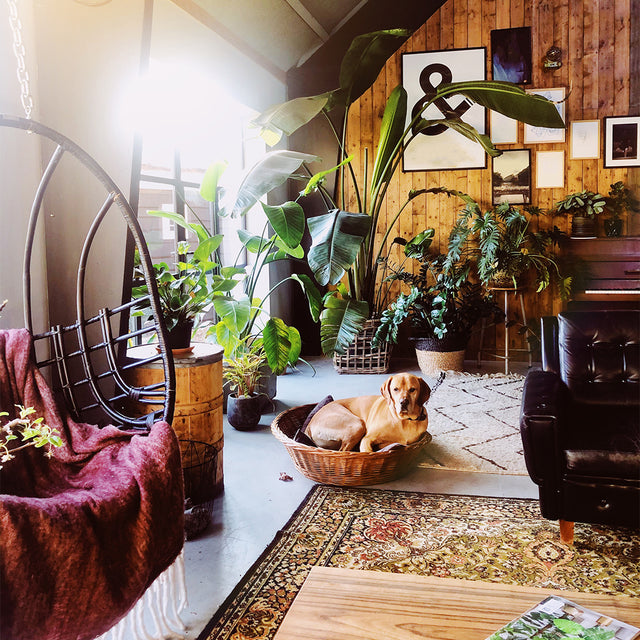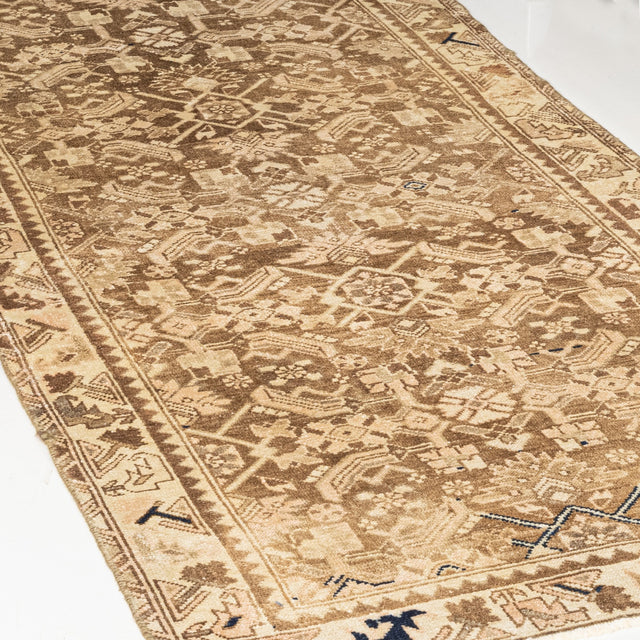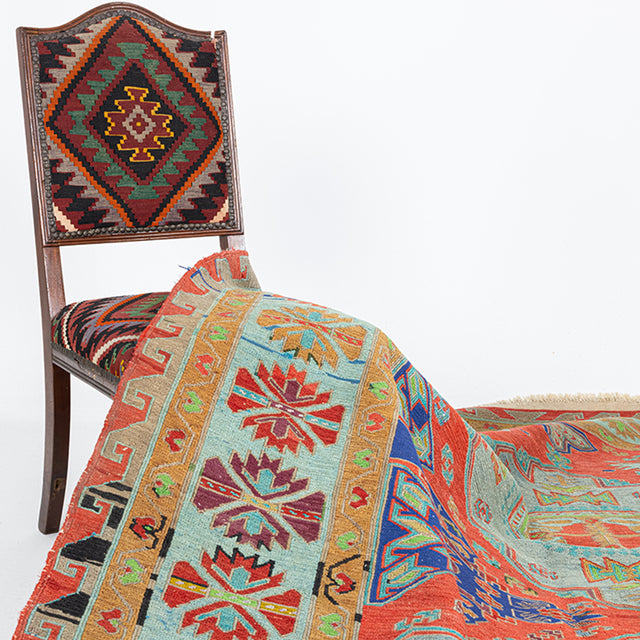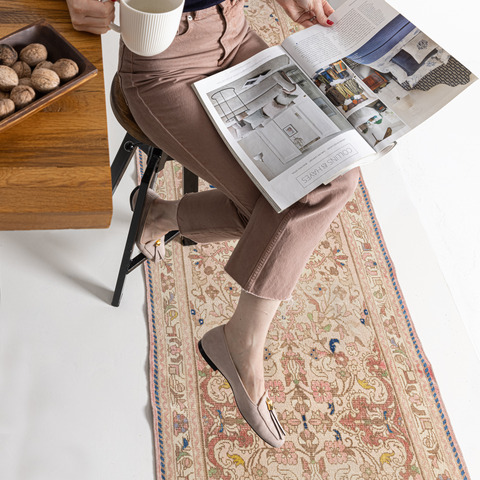Most people don’t realise that the beautiful antique and vintage rugs we sell were all made by women.
If you’re curious about the woman who made your rug, you’re in luck! Keep reading to find out how to ‘read’ a rug to understand who made it.

The Toy Loom
Weaving is a craft that requires long hours of work and great skill but only basic materials. It was usually practised by women because it was convenient to do at home along with the household chores. If you think WFH (working from home) is a new phenomenon, think again!
Young girls, when they were two of three years old, would sit by their mothers and copy the weaving process on toy looms. By the time they were seven or eight, they would have naturally learned the process of weaving.
The women who made rugs can be divided into three main categories: the Nomadic Girl, the City Slicker and the Village F-entrepeneur. Their lives were very different, and so were their rugs.
A Turkmen girl and her toy loom
The Nomadic Girl
Nomadic women would make rugs using wool from their own sheep. After spinning the wool, they would dye it with materials that were available in their surroundings: indigo plant (for blues), madder root (for reds), cochineal beetles (magenta or crimson), bark and berries. Nomadic women knew a thing or two about being resourceful!
Nomadic women didn’t sell their creations. Instead, their rugs would be used to keep them warm in winter and to decorate their tents in the summer.
Nomadic weavers would create their own designs, weaving from memory and following traditional designs of their tribe. Their patterns, like folk songs, were not written down anywhere but were kept alive by direct transmission from person to person.
Rugs produced by nomadic women have large, angular patterns because they are the easiest patterns to weave from memory. Nomadic rugs usually have a low knot count per square inch, giving them a more textured look than ‘finer’ village or city rugs.
A nomadic woman weaving on a horizontal loom
Nomadic rugs are often irregular in shape because the loom would be dismantled and reconstructed at least 20 times before a rug was finished. Constructing the loom with the same tension every time was impossible.
Looms were transported on the backs of animals when the tribes moved, so the looms used by nomadic women were horizontal and narrow. As a result, tribal rugs are often small and are always narrow.
The City Slicker
In large towns and cities, women would work side by side in workshops to weave rugs. These were the ‘career women’ of rug making. In rug ‘workshops’ there would be no trace of machinery: only lines of weavers at their looms and sometimes a salim (singer) who would call the knots and help to give rhythm to the weaving.
Everything was carefully organised and controlled and the women would work from detailed patterns produced by well-known artists.
City rugs are the most ‘sophisticated’ and flawless of all rugs. A rug with neat curves is one tell-tale sign of a rug produced in a city workshop. Rugs are woven row by row and producing curves- particularly neat ones- requires great skill and experience. Workshop rugs are the largest of all rugs produced.
If your rug is large, precisely woven and densely knotted, it’s likely that it was woven by a group of women in a workshop.

Women weaving a rug in a workshop, following a pattern or ‘cartoon’
The Village F-entrepreneur
Like their city equivalents, women weaving rugs in villages would almost always follow a pattern. Artists in towns and villages would create patterns and sell them in the local bazaars.
Village women were usually weaving for commercial gain rather than for themselves. They were therefore motivated to copy the intricate, fashionable designs of city rugs. Unlike their city counterparts, village weavers had the freedom to go ‘off-piste’ and were always pushing the boundaries to put their own spin on the patterns and outdo the competition! Some of the most aesthetically pleasing rugs were produced by innovative village women.
Village looms would need to be as big as possible whilst still fitting into a home and allowing a family to live there comfortably. Weaving was not a quick process, so this was important!
Because of space restrictions for the loom, village rugs were rarely larger than 8x5 feet. Weaving a rug that size would take a year to complete. Once the rug had been completed, it would be thoroughly washed in a nearby river or stream.
After a rug was removed from the loom, it was washed in a river

A village weaver
Sealed With a Kiss
Many nomadic and village rugs were made by young brides to celebrate their wedding. These are easy to spot for a number of reasons. The weaver would often weave her name and/or that of her betrothed into the rug, as well as the date and certain motifs (ram horns and hips symbols for fertility, eye symbols for protection from evil). These rugs would be used in the couple’s future home. Due to the young age of these weavers, colours tend to be bright, strong and unsophisticated. Meanwhile, the patterns have a naivety of execution and freshness.

A rug woven by a young woman named Ayşe. Her ‘signature’ appears in the middle of the rug.

